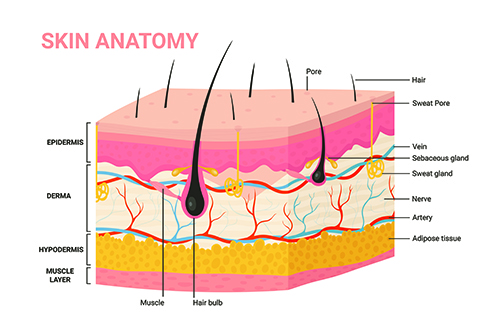The first full week of February is Nation Burn Awareness Week. Burn injuries result in 40,000 hospitalizations each year, and these injuries can be devastating and even deadly. Combing through OSHA’s Fatality Inspection Data, you don’t have to look far before you see just how horrific workplace burns can be. From downed power lines to chemical exposure to arc flash, in many of these incidents, burn prevention could have saved lives and prevented injuries.
As the saying goes, where there’s smoke, there’s fire. The same cannot be said of burns. Workplace burn prevention has to go beyond fire safety. As a first step, it’s a good idea to get familiar with the types of burn injuries.
According to the National Center for Biotechnology Information (NCBI), thermal burns are caused by excessive heat from contact with flames, steam, hot surfaces, or hot liquids. The top priority when dealing with thermal burns is to stop or control the burning process. Basic first aid measures for these types of burns include cool water or compresses, sterile bandages, ointment, and pain management. If burns are severe (presenting with intense or worsening pain, multiple layers of skin impacted, large blisters, delicate areas injured), the burns should be evaluated by a medical professional.
Thermal burn prevention includes PPE, training, emergency action plans, and fire prevention, protection, and detection.
Sun exposure burns fall under the category of thermal burns, however, there are some special considerations. Employees who work outdoors should be provided with the proper training and PPE to prevent both burns and heat stress. Additionally, workers should be permitted to reduce hours spent in direct sunlight and take breaks to seek shade.
Chemical burns occur when skin or eyes come in contact with corrosive or caustic materials (e.g., acids or alkaloids). These materials eat away at tissues causing burn-like injuries. Basic first aid for these injuries may differ, depending on the type of chemical exposure, but generally removing the cause of the burn by flushing with cool water, removing clothing and jewelry that may still have the chemical on it, and bandaging the impacted areas is advised by the Mayo Clinic. If chemical burns are deep, cover large areas, or cover hands, feet, face, groin, buttocks, or a major joint, immediate assessment by a medical professional is necessary.
Chemical burn prevention includes PPE, training, and hazard communication.
Electrical burns happen when electricity comes in contact with the body, and these injuries can happen whether or not the current comes in direct contact with skin. Before administering first aid, it’s critical that the source of the electricity be turned off. Treatment is similar to that of other burns, however, a person who has been in contact with electricity should be seen by a doctor. Electrical burns can be worse than expected based on what you can see on the skin, and there may be damage to internal tissues.
Electrical burn prevention includes PPE, lockout/tagout, training, and a robust electrical safety program.

Burn treatment often requires knowledge of burn severity. And understanding just how devastating these injuries are should reinforce the importance of burn prevention. Though most are familiar with first-, second-, and third-degree classifications, according to the NCBI, there are six degrees of burn injury:
First Degree: Superficial, minor damage affecting only the top layer of skin. Though these burns may be pink or red and painful, they will not blister.
Second Degree: Damage extending beyond the top layer of skin, these burns will be red and very sore and can often blister.
Third Degree: Damage to both the epidermis (outermost layer of skin) and dermis (tough connective tissue, hair follicles, and sweat glands), third-degree burns can destroy tissue. These injuries can appear white or charred.
Fourth Degree: Not only are all layers of skin impacted, muscles, tendons, and bones can be affected. The skin will appear charred, and bone may be exposed.
Fifth Degree: Going beyond fourth degree, fifth-degree burns present with charred, white skin and exposed bone.
Sixth Degree: Going beyond fifth degree, sixth-degree burns present with loss of skin and exposed bone.
When assessing burn injuries, thickness is a consideration.

Partial Thickness: First- and second-degree burns fall under the partial thickness category. While first-degree burns are superficial in this regard, second-degree burns can range from superficial partial thickness (appears red with blisters, is wet, and blanches with pressure) that heal within three weeks to deep partial thickness (appears yellow or white, is dry, and does not blanch with pressure) that take three to eight weeks to heal.
Full Thickness: Third-degree and up are classified as full-thickness burns. The skin is dry and leathery and appears white, black/brown, or charred and there is no blanching with pressure. These injuries may require skin grafting or amputation and require more than eight weeks to heal.
Clearly, burn injuries can be devastating, which is why burn prevention is an important part of workplace safety.

Job safety is a right. According to OSHA, “Federal law entitles you to a safe workplace. Your employer must keep your workplace free of known health and safety hazards.” Burn prevention falls within these rights, including:
Let us help you prevent burns in the workplace as well as other common, preventable injuries. We're here to answer your questions, offer advice, and help you build a comprehensive safety program. Contact us today!
